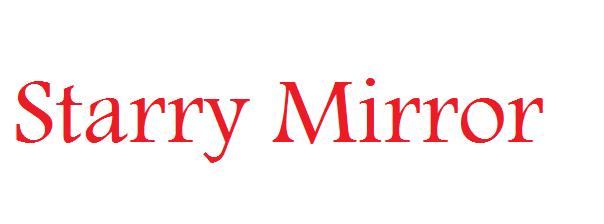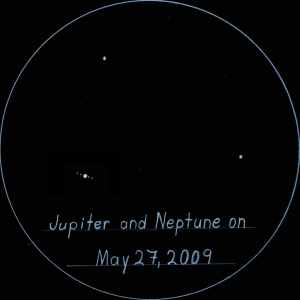Copyright 2009 Starry Mirror



The
TM
Astronomy From West Virginia
JUPITER AND NEPTUNE TO BE IN CONJUNCTION IN LATE MAY OF 2009
BRIDGEPORT, WV (S-M) - At the end of May, skywatchers are in for a treat as Jupiter and Neptune will be so close together in the sky that we will be able to see them both in one low-power view through a telescope or even large binoculars.
The two planets will be separated by one-half degree, which is about the same size as the apparent diameter of our own Moon as seen from Earth. The close conjunction of the pair is really just a matter of perspective, because Neptune will actually be about six times more distant than Jupiter. The latter will be about 500 million miles from the Earth, whereas Neptune will be close to 3 billion miles distant. As seen over the next few weeks, Jupiter will appear to pass Neptune in the sky.
Jupiter will be a fine sight, with its four Gallilean moons arrayed out from it in a line. The little moons will actually appear brighter than Neptune, because they are so much closer to Earth. Jupiter will be showing its cloud bands and Great Red Spot, which we recently have seen to have a darker appearance than it did ten years ago.
Neptune will appear as a starlike point in most telescopes. In larger telescopes, some blue-green color and a tiny disk may be seen, but most observers will see the distant planet as a gray star.
The planets will appear relatively close from mid-May to mid-June. They will be best placed a couple of hours before Sunrise, when Jupiter will be low in the south. Jupiter's orbit is currently taking it through the Summer zodiac, which is low in our northern sky. When the planets are at their closest, there will also be a magnitude 5 star, Mu Capricornus, in the same field.
We hope everyone will get a chance to see this conjuction. Some who have not seen Neptune before will find this to be their chance to find it the "easy way." And, the event provides a great sense of perspective when one considers the true distance between the giant gas planets. - GW

In a small telescope, this will be the scene on May 27, 2009, when Jupiter and Neptune are in conjunction. Jupiter's moons will be clearly seen, and Neptune will appear as a star to the north. The star on the right is Mu Capricornus.